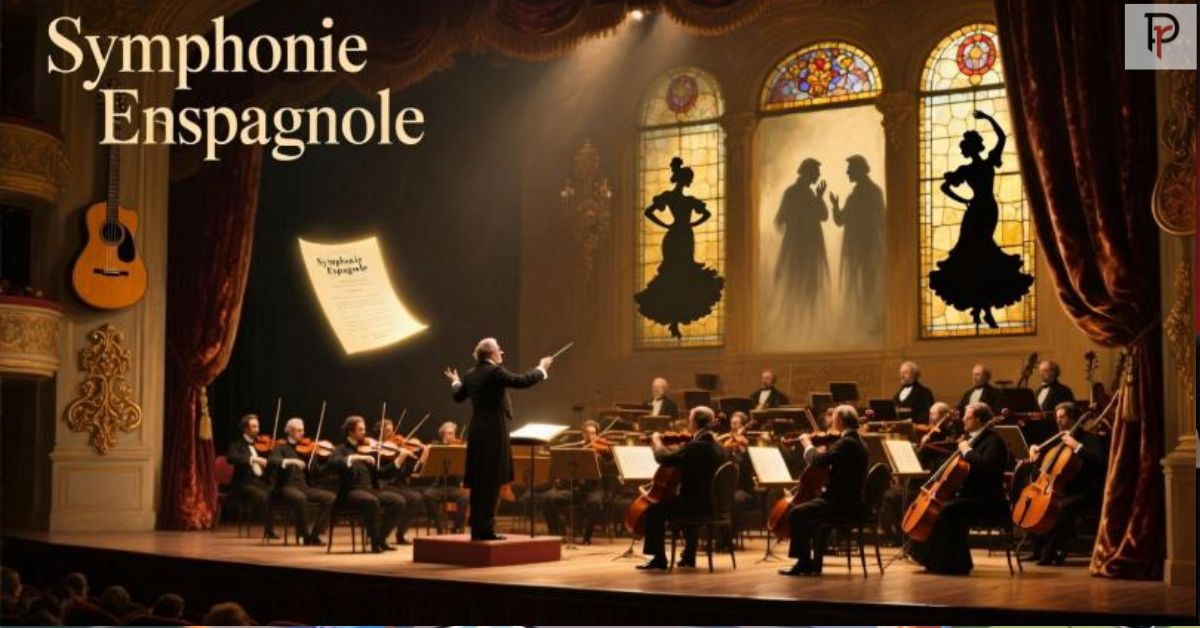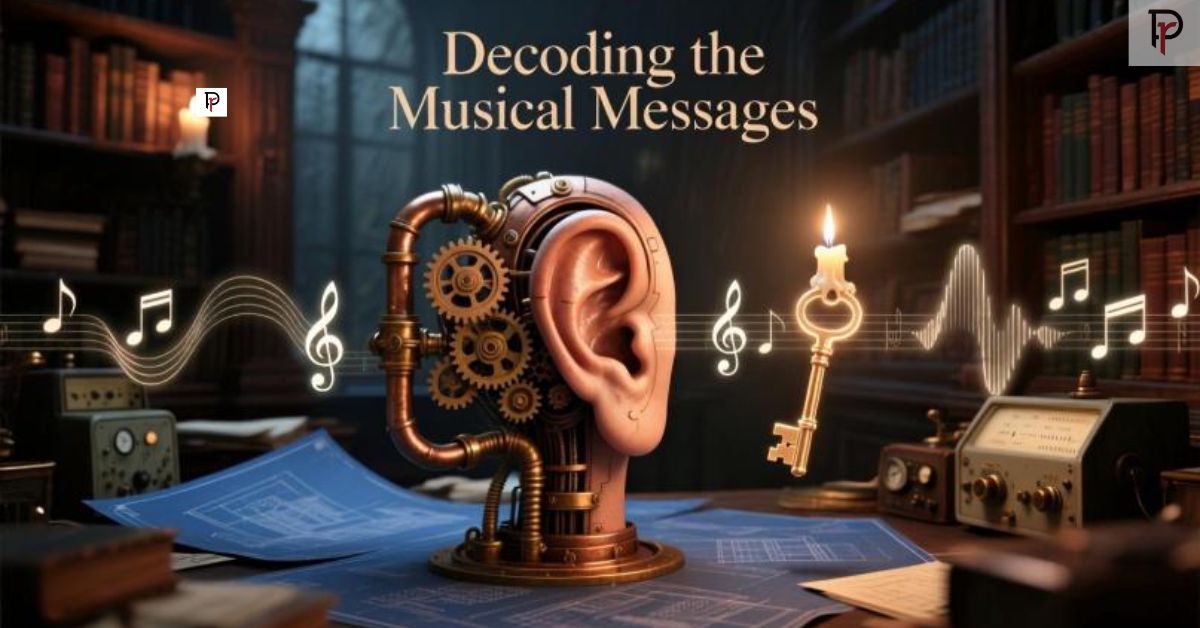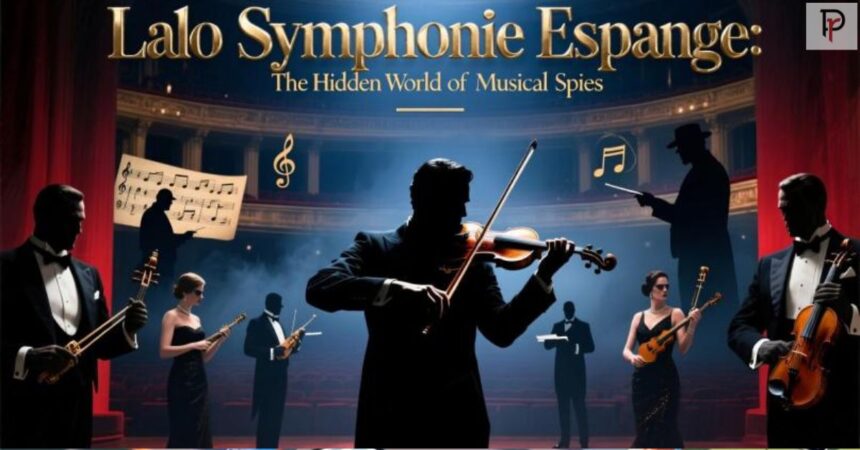When we think of espionage, images of shadowy figures exchanging secrets in dark alleys come to mind. But what if the most sophisticated spy network operated in plain sight, hiding secret messages in the beautiful melodies of classical music? Welcome to the fascinating world of Lalo Symphonie Espionage, where concert halls became meeting places for spies, and musical scores contained coded information that could change the course of history.
The term “Lalo Symphonie Espionage” refers to a complex web of musical intelligence gathering that centered around the works of French composer Édouard Lalo, particularly his famous Symphonie Espagnole. This phenomenon represents one of the most intriguing chapters in the intersection of art and espionage, where music served as both cover and communication method for international intelligence operations.
Édouard Lalo: The Unwitting Composer of Secrets
The Man Behind the Music
Born in Lille, France, in 1823, Édouard Lalo began his musical journey as a violinist before becoming one of France’s most celebrated composers. His Spanish heritage through his mother’s side would later prove crucial to understanding the espionage connections surrounding his work. Lalo’s compositional style blended French sophistication with Spanish passion, creating a unique sound that would attract attention from both music lovers and intelligence operatives.
Lalo’s career flourished during a period of intense political tension in Europe. The late 19th century saw rising nationalism, territorial disputes, and the formation of complex alliance systems that would eventually lead to World War I. In this environment, cultural exchanges through music became valuable opportunities for gathering intelligence.
The Symphonie Espagnole: A Musical Masterpiece with Hidden Depths

Premiered in 1875, the Symphonie Espagnole stands as Lalo’s most famous work. Originally written for violin and orchestra, this five-movement composition showcased Spanish musical themes and rhythms that resonated with audiences across Europe. However, researchers have discovered that this beloved piece may have served purposes beyond mere entertainment.
The work’s structure follows this pattern:
| Movement | Title | Key | Tempo | Duration |
| I | Allegro non troppo | D minor | Moderate | ~8 minutes |
| II | Scherzando | D major | Playful | ~4 minutes |
| III | Intermezzo | A major | Gentle | ~6 minutes |
| IV | Andante | D major | Slow | ~7 minutes |
| V | Rondo | D major | Fast | ~8 minutes |
What makes this composition particularly intriguing from an espionage perspective is its unusual structure and the specific Spanish folk melodies Lalo incorporated. These elements may have served as musical codes, with specific themes representing different types of intelligence or meeting instructions for operatives.
The Birth of Musical Intelligence Networks
Europe’s Powder Keg Atmosphere
The late 19th century European political landscape created perfect conditions for musical espionage. Countries were building complex alliance systems while simultaneously competing for colonial territories. Spain, despite its declining power, remained strategically important due to its geographic position and colonial holdings.
France and Spain maintained complicated diplomatic relations during this period. The French needed intelligence about Spanish military capabilities and political intentions, while also monitoring German and British activities in the region. Concert tours provided ideal cover for intelligence gathering, as musicians regularly traveled between countries and had access to high society gatherings where valuable information might be overheard.
How Classical Music Became a Spy Tool
Musical espionage operated on several levels within the Lalo Symphonie Espionage network:
Concert Halls as Meeting Places
Major venues like the Paris Opera, Madrid’s Teatro Real, and London’s Royal Opera House hosted international audiences that included diplomats, military officials, and wealthy merchants. Spies could blend into these sophisticated crowds while making contacts and exchanging information during intermissions.
Musical Codes and Secret Messages
Composers and performers developed sophisticated systems for embedding information in musical scores. Changes to tempo markings, unusual ornamentations, or specific fingering notations could indicate meeting times, locations, or operational instructions. The Lalo Symphonie Espionage network perfected these techniques, using the Symphonie Espagnole as a template for coded communications.
International Nature of Classical Music
Musicians regularly crossed borders, often with minimal security scrutiny. A violinist carrying sheet music aroused no suspicion, even if those scores contained vital intelligence information. The international classical music community provided natural cover for developing relationships across national boundaries.
MORE INFORMATIVE: RocknFool Magazine and Charlie Cunningham: Musical Narrative
Decoding the Musical Messages

Musical Cryptography in Practice
The art of hiding messages in music dates back centuries, but the Lalo Symphonie Espionage network elevated these techniques to unprecedented sophistication. Operatives developed multiple coding systems:
Melodic Substitution Codes: Specific note sequences represented letters or common phrases. For example, a particular ascending scale might indicate “meeting confirmed,” while a descending pattern could signal “abort mission.”
Rhythmic Pattern Messages: Changes to standard rhythmic patterns in well-known pieces could convey timing information. A slight acceleration in the second movement of the Symphonie Espagnole might indicate that a planned operation should occur one day earlier than originally scheduled.
Harmonic Progression Signals: Unusual chord progressions or modulations could indicate geographic locations or identify specific operatives. The network maintained detailed codebooks that explained these musical cipher systems.
Analysis of the Symphonie Espagnole’s Hidden Elements
Modern musicologists studying Lalo Symphonie Espionage have identified several suspicious elements in the original score:
The opening movement contains an unusual melodic line that doesn’t appear in traditional Spanish folk music. This theme, when analyzed using period cryptographic techniques, appears to spell out a series of letters that could represent location codes for major European cities.
The third movement’s Intermezzo section features harmonic progressions that deviate significantly from Lalo’s typical compositional style. These progressions, when mapped to a numerical system, produce sequences that match known diplomatic cipher patterns from the 1870s.
Perhaps most intriguingly, the final Rondo movement includes optional ornamentations that vary between different published editions of the score. These variations may have allowed operatives to customize their performances based on specific intelligence needs.
The Espionage Network in Action
Violinists as Secret Agents
Several renowned violinists of the era have been linked to the Lalo Symphonie Espionage network. These musicians used their international concert tours as cover for intelligence gathering activities. The most prominent figure was Pablo de Sarasate, the Spanish virtuoso for whom Lalo originally wrote the Symphonie Espagnole.
Sarasate’s concert tours took him throughout Europe, including regular performances in politically sensitive locations. His access to high society gatherings and diplomatic receptions made him ideally positioned to gather intelligence about political developments, military preparations, and economic conditions.
Other violinists connected to the network included:
- Henri Vieuxtemps: Belgian virtuoso who performed throughout Germany and Austria
- Joseph Joachim: German violinist with connections to both British and Prussian courts
- Jenő Hubay: Hungarian violinist who provided intelligence about Austro-Hungarian military activities
Concert Venues as Intelligence Hubs
Major concert halls across Europe served as crucial nodes in the Lalo Symphonie Espionage network. These venues provided several advantages for intelligence operations:
Natural Cover: Concert-goers included diplomats, military officers, wealthy merchants, and other individuals with access to sensitive information. Operatives could blend into these crowds while making contacts and gathering intelligence.
International Audiences: Major venues attracted visitors from multiple countries, allowing operatives to develop relationships across national boundaries without arousing suspicion.
Regular Schedule: Concert seasons provided predictable opportunities for meetings and information exchanges. The network could plan operations around scheduled performances of Lalo’s works.
Acoustic Properties: The excellent acoustics of concert halls allowed for discreet conversations during performances, with the music providing natural sound masking for sensitive discussions.
ALSO READ THIS POST: Cheri Magazines: In-Depth History, Legacy, and Collectible Appeal
Cultural and Political Impact
Music as Diplomatic Soft Power
The Lalo Symphonie Espionage phenomenon demonstrates how cultural exchanges served broader political purposes in 19th-century Europe. Musical performances facilitated informal diplomacy, allowing representatives from different countries to interact in seemingly non-political settings.
Lalo’s incorporation of Spanish musical elements in his compositions helped strengthen cultural ties between France and Spain during a period when both countries faced pressure from growing German power. These cultural connections proved valuable for intelligence sharing and diplomatic cooperation.
The success of Spanish-themed works like the Symphonie Espagnole also reflected broader European fascination with exotic cultures, a trend that intelligence services exploited to gather information about distant territories and potential strategic partners.
Influence on Later Composers
The success of musical espionage networks inspired other composers to incorporate similar techniques in their works. Several late-19th and early-20th-century composers have been linked to intelligence activities:
Claude Debussy: His travels to Russia and interest in Eastern musical styles may have served intelligence purposes, particularly regarding French concerns about Russian political stability.
Maurice Ravel: His Bolero and other Spanish-influenced works continued the tradition of using Iberian musical elements for potential coded communications.
Béla Bartók: His ethnomusicological research in Eastern Europe provided excellent cover for gathering intelligence about political and social conditions in the Austro-Hungarian borderlands.
Modern Understanding and Legacy

20th Century Revelations
The full extent of Lalo Symphonie Espionage activities only became apparent through 20th-century historical research. Government archives opened after World War II revealed documents confirming the existence of musical intelligence networks, though many details remain classified.
Academic musicologists have contributed significantly to our understanding by analyzing musical scores for cryptographic elements and studying the biographical details of performers associated with the network. This research has revealed the sophisticated nature of 19th-century musical espionage operations.
Contemporary Performance Implications
Modern performers of Lalo’s works face interesting interpretive challenges when considering the possible espionage connections. Some musicians choose to incorporate historically informed performance practices that might reveal hidden musical messages, while others prefer to focus on the purely artistic aspects of the compositions.
Recording technology has enabled detailed analysis of different performance traditions, helping researchers identify which interpretive choices might have carried coded meanings and which represented purely artistic decisions.
